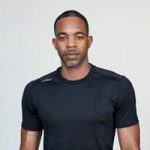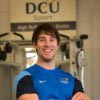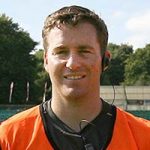Athlete footwear – “These boots were made for walking” – but surely not for injury?
As we have covered previously, accidents such as knee injuries can be detrimental to an athlete’s long-term performance. Ligament tears, ruptures, strains etc. are all part of the injury process for those athletes unfortunate to suffer from training / competition accidents. However, what are some of the injury mechanisms that lead to injuries? One of the most contemporary ideas that has been debated for some time is the idea that certain footwear can cause serious injury to the athlete. This article will investigate the notion that certain types of footwear can be the precursor of athletic injury. 
Sports apparel companies around the globe are constantly evolving their clothing lines in an attempt to boost athletic performance. This can be seen in in training, in competition, in sport shops and even in the advertising itself as “lighter / more durable / longer lasting” items of sports clothing are being highlighted. Yet for all that new sports clothing (and in particular footwear) claims to do, is this to the detriment of athletes in terms of the onset of injury?
In relation to athletics and long-distance running, research is pointing towards the fact that the actual running shoe may be the cause of running injuries. The cause of all these injuries is quite evident: cumulative micro-trauma caused by repetitive impact experienced during running. However, the design of the running shoe has a big bearing on this trauma. The design of the running shoe has led to a change in natural stride pattern, with researchers maintaining that the high arch leaves an athlete running on the balls of their feet the whole time, which can therefore lead to problems such as plantar fasciitis. Factors such as cushioning, stability and motion control come into play here with the premise that running shoes are supposedly designed to limit impact forces and prevent over-pronation (over-pronation leading to over-rotation of the lower leg and in turn putting extra stress on the joints). If the design of the running show does not facilitate these facets properly, chronic injury could ensue for the athlete in question!
Looking closer at boots used in field sports (e.g. soccer, rugby, American Football etc.), we can see there are other factors which can lead to athletic injury based on the footwear. It’s well known, of course, that boot traction influences athletic performance, especially in sports that involve sprinting or cutting, meaning abrupt rapid shifts in direction. In broad terms, more traction leads to better results – with the traction being caused by the “studs” or “blades” interaction with the surface. Athletic boots have two primary types of traction. One keeps you sticking to the ground as you move forward. The other, called rotational traction, kicks in when you move sideways or shift direction. For some time, most researchers have believed that forward-related traction does not have much effect on injury risk, while rotational traction does. Research has pointed towards the fact that many players suffered ankle & knee ligament damage due to the rotational traction caused by the boots interaction with the surface, and this traction was increased with the use of “bladed” sports boots.
Indeed the idea of “bladed” boots is a concern for coaches in some sports who feel that modern playing surfaces are much firmer than in years gone by which leaves the grass stronger and causes the blades to become stuck in the ground. This sticking of boots causes too much rotational traction and can lead to severe knee and ankle injuries. Metatarsal injuries are also on the increase over recent years, and this has been linked to the lightweight, bladed nature of modern boots. Some high-profile coaches, (e.g. Alex Ferguson) actually banned their players from using bladed boots on both the training ground and during competition for fear of injury.
Of course, injuries such as these are not only down to the type of footwear used by an athlete, factors such as surface condition, surface type, fatigue, athlete movement etc. all have an impact on the mechanism of injury. However, an athlete’s footwear is an important aspect of this activity, and as such, it’s selection should be considered very carefully by the individual!
About Metrifit
Metrifit is an athlete monitoring system that gathers subjective and objective information from both coaches and athletes in a simple but effective manner with intelligent visualization helping coaches and athletes to act on that data. Why not have a look at our Ready to Perform product and gain insight on the physical and mental state of your athletes through our daily wellbeing questionnaire? To find out more visit our Metrifit Product Overview page or get in touch for a free demo.

Dan Horan
Head of Fitness for International Football/Fitness Coach Men's Senior Team
Football Association of Ireland
Dan Horan
Head of Fitness for International Football/Fitness Coach Men's Senior Team
Football Association of Ireland


Dr. Dale Richardson
CEO Achieve Total Performance Pty Ltd
Dr. Dale Richardson
CEO Achieve Total Performance Pty Ltd




Aaron Mansfield
Head Coach, LMU Lions, Loyola Marymount University
Aaron Mansfield
Head Coach, LMU Lions, Loyola Marymount University


Richard Deuchrass
Lincoln University Athletic Performance Manager
Richard Deuchrass
Lincoln University Athletic Performance Manager


Dan Rickaby
Assistant S&C Coach, Tulane University
Dan Rickaby
Assistant S&C Coach, Tulane University


Kari Thompson
Head Volley Ball Coach, Southern Illinois University
Kari Thompson
Head Volley Ball Coach, Southern Illinois University


Dave Passmore
Head Coach, Irish Hockey
Dave Passmore
Head Coach, Irish Hockey


Yvonne Treacy
Nutritionist, Wexford Camogie
Yvonne Treacy
Nutritionist, Wexford Camogie


Ryan Osborn
Head Basketball Coach, Carmel High School
Ryan Osborn
Head Basketball Coach, Carmel High School


Lee Stutely
Team Manager and Athlete Support Services Coordinator at Great Britain Wheelchair Rugby
Lee Stutely
Team Manager and Athlete Support Services Coordinator at Great Britain Wheelchair Rugby


Graham Williams
Athletic Development Coach, MSc ASCC
Millfield School, UK
Graham Williams
Athletic Development Coach, MSc ASCC
Millfield School, UK

"When COVID altered college athletics as we knew it, Metrifit came to the rescue. This intuitive athlete monitoring, health and well-being system provides the athlete, coach, and sports medicine staff a way to monitor and balance the physical, emotional, health and well-being of our athlete’s. Metrifit provided that calm in the middle of the perfect storm for our entire athletic department for the future. Thank you to the entire Metrifit family for assisting our department with a seamless process."

Jennifer McIntosh
Head Athletic Trainer, Colorado School of Mines
Jennifer McIntosh
Head Athletic Trainer, Colorado School of Mines


Tino Fusco, B.Sc. ChPC
Head Coach, Women's Soccer, Mount Royal University (Canada)
Tino Fusco, B.Sc. ChPC
Head Coach, Women's Soccer, Mount Royal University (Canada)


Erik Helland
Director of Strength & Conditioning and Head Strength Coach Men’s basketball, University of Wisconsin
Erik Helland
Director of Strength & Conditioning and Head Strength Coach Men’s basketball, University of Wisconsin


Niall O’Driscoll
Academy Directory, SJ.B (St. Joseph’s Bray ) Academy
Niall O’Driscoll
Academy Directory, SJ.B (St. Joseph’s Bray ) Academy


Emma Hawke, PhD Exercise Physiology
Coach - Sweden Climbing, Olympic Offensive - Female Coach Swedish Olympic Committee, Senior Lecturer - Coach education programme (Sweden)
Emma Hawke, PhD Exercise Physiology
Coach - Sweden Climbing, Olympic Offensive - Female Coach Swedish Olympic Committee, Senior Lecturer - Coach education programme (Sweden)


Joe O’Connor
NISUS Fitness, S&C Coach Clare Senior Hurling, Horse Sport Ireland and Limerick Senior Hurling
Joe O’Connor
NISUS Fitness, S&C Coach Clare Senior Hurling, Horse Sport Ireland and Limerick Senior Hurling


Edgar K. Tham
Founder and Chief Sport & Performance Psychologist, SportPsych Consulting (Singapore, Indonesia, Philippines)
Edgar K. Tham
Founder and Chief Sport & Performance Psychologist, SportPsych Consulting (Singapore, Indonesia, Philippines)


Brian Clarke
Head Strength and Conditioning Co-ordinator,Noblesville High School
Brian Clarke
Head Strength and Conditioning Co-ordinator,Noblesville High School


Kevin Schultz
Associate Director of Strength & Conditioning
Director of Olympic Strength & Conditioning
University of Wisconsin
Kevin Schultz
Associate Director of Strength & Conditioning
Director of Olympic Strength & Conditioning
University of Wisconsin


Michael Torres
CEO, Shift Performance, Miami
Michael Torres
CEO, Shift Performance, Miami


Cian O’Neill
Kildare Senior Football Manager
Cian O’Neill
Kildare Senior Football Manager


Tommy Mooney
Strength and Conditioning Coach at DCU Sport and with Dublin Minor GAA
Tommy Mooney
Strength and Conditioning Coach at DCU Sport and with Dublin Minor GAA




Brijesh Patel
Quinnipiac University, Head Strength and Conditioning Coach
Brijesh Patel
Quinnipiac University, Head Strength and Conditioning Coach


J.B. Belzer
Head Coach, Women's Soccer at Regis University
J.B. Belzer
Head Coach, Women's Soccer at Regis University


Jason McGahan
Sports Scientist, Kildare Football, PhD Sports Science Researcher
Jason McGahan
Sports Scientist, Kildare Football, PhD Sports Science Researcher


Robert Karlsson, Professional Golfer
Robert Karlsson, Professional Golfer


Paul Cremin
Head Physiotherapist, Cornish Pirates Rugby Club
Paul Cremin
Head Physiotherapist, Cornish Pirates Rugby Club


Eamonn Fitzmaurice
Kerry Senior Football, Manager
Eamonn Fitzmaurice
Kerry Senior Football, Manager


 Previous Post
Previous Post Next Post
Next Post





